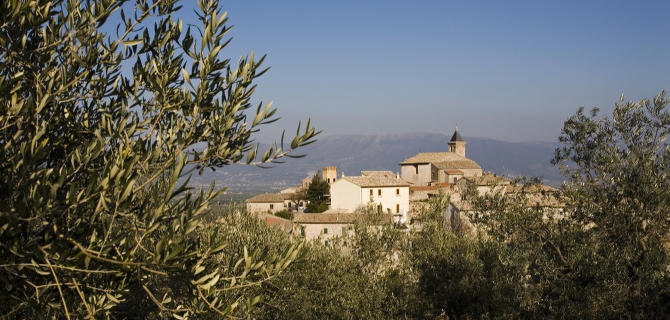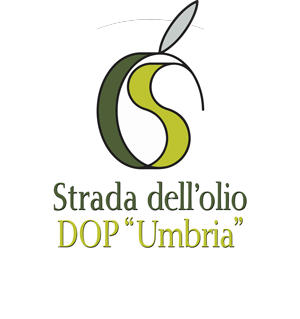
Lucky land, enchanting land, “jucunda” land as Saint Francis of Assisi called it. It is the Valle Umbra immersed in the heart of the “green heart” of Italy, where Umbria is more Umbria than elsewhere. Because here, above all, the immense expanse of olive trees and vines gives flavor to the simple life, industrious, but at the same time “slow”, which is still being carried out in these parts today.
“Widespread Museum”, so called for the thousand expressions of art that emerge from every fold of the ground, harbinger of other museums born to celebrate its history and traditions and enhance its products. Like the Regional Museum of Ceramics in Deruta and, in Torgiano, the Lungarotti Wine and Olive and Oil Museums, authentic “monuments” to the local treasures.
Between Torgiano and the Etruscan Bettona it happens to meet History in the mighty Castle of Rosciano and ancient words of centuries also pronounced the thirteenth-century Castello di “Ritaldi”.
It is really exciting to reach Gualdo Cattaneo and Giano dell’Umbria, prestigious “City of Oil”, through a real road of the olive trees – here as in other parts of the region, an inspiration for poets, writers, painters or simple, thrilled travelers – characterized by the thousand year old specimens of Macciano and Camporeggiano near the Abbey of San Felice.
A masterpiece of Romanesque art and oil production workshop, this abbey gives its name to the local cultivar that, with its sweetness, characterizes the extra virgin of the Martani Mountains. To these plants, perennial sources of life and beauty, it is still an homage, as guardians of stories and traditions that are perpetuated in particular during the Frasca Festival, which celebrates the end of the olive harvest, the so-called “buonfinita”. In these places also contemporary artistic expressions find their cradle in Frigolandia, the “free republic of creativity” or more simply the laboratory of art, culture and satire.
A few kilometers away there is, Massa Martana, the ancient town called Martis Tudertinum, an important road junction along the old Flaminia road. Therefore, a visit to Todi is inevitable. Here in an unexpected Middle Ages, the city emerges from the wonderful Piazza del Popolo, where the palaces that symbolize secular and religious power are proudly facing each other.
And then further on until you reach the “caliginosa” Bevagna with the medieval shops of the Mercato delle Gaite. The divine Montefalco shines beside it “a little piece of heaven fallen on the ground” as an English traveler, fascinated by such splendor, wrote in the nineteenth century. But more prosaically famous also for being the home of a truly exceptional wine like Sagrantino. It is he, the “lord in red”, together with the artistic, architectural and environmental chests that make the “railing of Umbria” beautiful, to exert the strongest appeal to tourists from all over the world.
